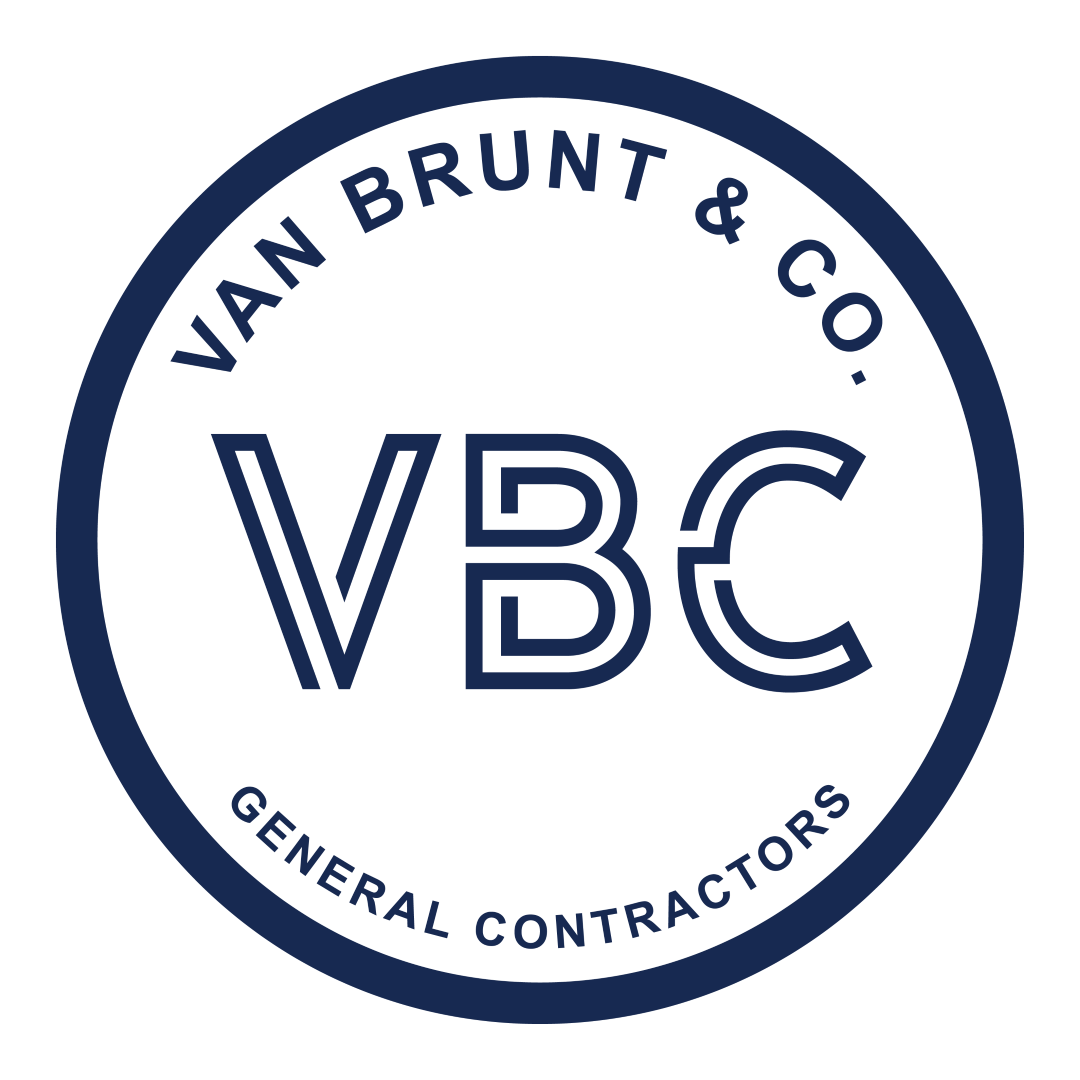Picking the right size for your medical office space is crucial for running a smooth and professional practice. A space that’s too small can limit your growth, while one that’s too large can increase costs. It’s important to think about your long-term goals from the start.
You’ll need to work with experienced building contractors to make sure the layout meets healthcare codes and safety rules. Medical offices must follow specific regulations, and working with pros helps you avoid costly mistakes. Make sure your space also supports patient flow, staff needs, and medical equipment.
Opening, moving, or expanding a healthcare practice involves more than just picking a location. Planning space can be confusing because of zoning laws, city permits, and strict design standards. Many healthcare providers face delays and problems by not preparing early.
In this guide, we’ll walk you through what every practice owner should know about planning for medical office space. Whether you’re just starting out or ready to grow, understanding space needs now will save time and money later.

How to Pick the Right Spot for Your Office
Where you set up your office can shape your future success. It’s not just about the space—it’s about strategy. You need to think about how easy it is to get to, the laws that apply, and who lives nearby. These factors directly impact how smoothly your business runs and how many patients you attract.
Make Sure It’s Easy to Get To
Your office should be simple to find and easy to access. Whether people drive or take public transportation, it must be convenient. Parking should be easy and free if possible. If people can’t get there without hassle, they may choose someone else. Visibility from main roads also helps attract walk-ins or curious passersby.
Know the Rules Before You Sign a Lease
Make sure the location follows local zoning rules and healthcare regulations. Violating these can shut you down. Also, think about being near hospitals or clinics. This makes referrals easier, which can help grow your patient base. Being in a medical district often means more trusted foot traffic and networking opportunities.
Understand Who Lives Nearby
Research the local population before choosing your spot. Look at age, income, and overall health needs. These details show if there’s a real demand for your services. For example, if you offer pediatric care, make sure many families live nearby. This research helps you avoid opening where there’s no need for your services.
In Summary: Your location should be easy for people to find and get to. It must follow local laws and be near medical hubs when possible. Finally, know the local population to make sure there’s real demand for what you offer. Putting time into this choice can save money, grow your client base, and help your business thrive.

Medical Office Space Requirements
Choosing the right amount of space is critical for running a successful medical practice. Your square footage should reflect your services and the number of staff members. A solo general practitioner will need less space than a busy multi-specialty clinic. Getting this right helps your practice run efficiently from the start.
Typical medical office spaces range from 3,000 to 8,000 square feet. A common planning guide is 1,500 square feet per medical provider. This allows for comfortable layouts and ensures there’s room for both patients and staff.
Room Size Guidelines
Exam rooms should be no smaller than 10 feet by 10 feet. This ensures medical equipment fits and staff can move freely. Administrative offices typically need about 250 square feet to fit desks, computers, and files without feeling cramped.
The waiting area should offer 20 square feet per person for standard chairs or 30 square feet for larger lounge seating. This prevents overcrowding and supports a calm, welcoming environment.
Each patient bed usually measures 2.5 feet by 6.5 feet. You’ll also need additional space around the bed for staff and necessary medical tools. Storage rooms should be at least 50 to 100 square feet, depending on your specialty and equipment needs.
Parking Requirements
Adequate parking is essential for patient satisfaction and smooth operations. A good rule is 2 to 3 parking spaces for every 1,000 square feet of space. This helps avoid scheduling delays and supports a better overall experience for your visitors.
Planning for Future Growth
Your office space should be able to grow with your practice. Always consider long-term needs when choosing a location. Having room to add more exam rooms or expand the waiting area later is a smart investment.
Even if you don’t need extra space right away, planning ahead saves time and money. Expansion-ready layouts reduce the need for expensive renovations and allow your practice to evolve without disruption.

Maximizing Your Office Space and Layout
Beyond meeting basic size requirements, it’s important to optimize your medical office layout for function and efficiency. Smart design choices can help you improve storage, streamline workflow, and get the most out of every square foot—without the need to expand.
Use Shelving and Wall-Mounted Racks
Built-in shelving and wall-mounted racks offer long-term benefits. They may cost more upfront but reduce clutter and wasted space later. Using vertical storage keeps supplies organized and off the floor. This frees up room and improves overall accessibility for staff.
Wall-mounted systems are perfect for storing items you use often. With a well-planned layout, shelves support better patient flow and free up walking areas. Every inch counts, especially in high-traffic zones like exam rooms or hallways.
Install Pull-Out Trays in Cabinets
Pull-out trays are a game-changer for cabinet storage. They make it easier to access supplies quickly and efficiently. Instead of digging through deep shelves, trays let you grab what you need with one pull.
This simple upgrade helps keep your storage clean, organized, and functional. It also boosts staff productivity by cutting down on time spent searching for tools or materials during patient care.
Add Tall Cabinets for Bulky Equipment
Tall cabinets are ideal for storing larger medical tools that aren’t needed every day. These cabinets use vertical space instead of taking up valuable floor area. They’re especially helpful in small offices where space is tight.
By storing bulky items in tall cabinets, you avoid crowding your active work areas. Everything stays within reach, but out of the way until it’s needed.
Create a Layout That Supports Workflow
Design your layout to reduce unnecessary steps and walking. Keep exam rooms, supply areas, and staff workstations close together. This saves time during patient visits and helps your team stay focused.
An efficient workflow layout leads to shorter wait times and faster service. It also supports better teamwork by keeping communication smooth and clear across departments.
Final Tip: A smart layout can turn a good office into a great one. Every shelf, tray, and cabinet should have a purpose. Planning for function, not just looks, helps your medical practice run like a well-oiled machine—without expanding your footprint.

Meeting Healthcare Compliance Requirements
Ensuring your medical office meets all healthcare regulations is not optional—it’s essential for legal operation and patient trust. From accessibility to privacy and safety, compliance should guide every decision across design and construction projects.
Follow ADA Accessibility Standards
Your space must be fully accessible to all patients, including those with physical disabilities. The Americans with Disabilities Act (ADA) outlines specific features that must be in place. These include entry ramps, wide doorways, and accessible restrooms. Waiting areas, hallways, and exam rooms should also allow wheelchair access.
Meeting ADA standards is not just about legality—it reflects your commitment to inclusivity and patient care. An accessible space ensures everyone can receive medical services without barriers.
Ensure HIPAA-Compliant Design
Protecting patient privacy is a top priority in any medical setting. Your office layout must support Health Insurance Portability and Accountability Act (HIPAA) regulations. This means creating private check-in desks and keeping patient records secure.
Soundproof walls in exam rooms and consultation areas can help prevent accidental disclosures. Digital records should be safely stored and access should be restricted to authorized personnel only.
Meet Local Building and Safety Codes
Your facility must comply with local building codes to ensure it’s structurally safe and operational. These codes cover everything from fire exits to lighting and ventilation. Working with licensed contractors and inspectors will help you stay within legal standards.
Staying compliant with building codes not only prevents penalties but also ensures a safe environment for patients and staff.
Implement Infection Control Protocols
Medical offices, especially those with labs or procedure rooms, must follow infection control guidelines. This includes using proper materials for surfaces, installing handwashing stations, and setting up safe disposal areas for hazardous waste.
Cleanliness isn’t just a best practice—it’s a legal and health requirement. Every part of your office, from the waiting area to the exam rooms, should support a sterile and sanitary environment.
Takeaways: Compliance isn’t just about avoiding fines—it’s about creating a safe, welcoming, and professional environment. Design your space with privacy, accessibility, and cleanliness in mind to meet all healthcare regulations and support quality care.

Understanding Lease and Financial Factors for Your Medical Office
Choosing the right medical office space isn’t just about location and layout. Your lease agreement and financial planning can make or break your success. It’s essential to negotiate favorable terms and account for all ongoing costs.
Negotiate Strong Lease Terms
Before signing any lease, review every detail carefully. Always negotiate with your landlord to get terms that support long-term success. Focus on these four key areas:
- Lease length: A longer lease may offer better rates but reduces flexibility. Match terms to your growth goals.
- Renewal options: Secure the option to extend your lease under agreed terms. This avoids sudden relocations.
- Tenant improvement allowances: Negotiate funds or credits that allow tenants to customize the space according to their specific medical requirements.
- Rent escalation clauses: Clarify how and when rent increases will occur to avoid surprises down the line.
Work with a healthcare real estate broker if possible. They understand industry-specific needs and can help you avoid costly oversights.
Account for All Practice Costs
Rent is only one piece of your monthly expenses. Proper budgeting keeps your practice financially healthy and running smoothly.
Here are the main categories to plan for:
- Rent: This includes the base rent and any shared building fees. Understand what’s included in your lease.
- Utilities: Budget for electricity, water, heating, and cooling. These costs can vary by location and season.
- Maintenance: Set aside funds for both routine upkeep and unexpected repairs. This keeps your office functional and safe.
- Operational costs: Don’t forget internet, phone service, medical waste removal, office supplies, and cleaning services.
In Summary: A well-negotiated lease and realistic financial plan are key to a thriving medical office. By understanding your costs and securing flexible, fair terms, you’ll set the foundation for long-term success and stability.

Partnering with a General Contractor for Your Medical Office Build
When constructing a clinic or small medical office, collaborating with experienced medical office builders is crucial. These seasoned professionals ensure your project meets healthcare regulations, functions efficiently, and stays within budget.
Expertise in Commercial Construction
A general contractor with a solid background in commercial construction brings valuable experience to your project. They understand the nuances of building functional spaces that cater to both staff and patient needs. Their knowledge helps in selecting appropriate materials and designs that comply with industry standards.
Efficient Project Management
Experienced contractors excel in coordinating various aspects of the construction process. They manage timelines, oversee subcontractors, and ensure that each phase of building construction progresses smoothly. This level of oversight minimizes delays and keeps the project on track.
Customized Solutions for Healthcare Spaces
General contractors adept in commercial projects can tailor the construction to fit the specific requirements of a medical office. They focus on creating layouts that enhance workflow, ensure patient privacy, and accommodate medical equipment. Their approach results in a space that is both practical and welcoming.
Future-Proofing Your Facility
A forward-thinking contractor plans for the future growth of your practice. They design spaces that can adapt to evolving needs, whether it’s adding more examination rooms or integrating new technologies. This foresight saves time and resources in the long run.
Tips: Selecting the right general contractor is a pivotal step in establishing a successful medical office. Their expertise in commercial construction, project management, and customized solutions ensures that your facility is built to serve both current and future needs effectively
Key Takeaways
- Select a location that offers easy access for patients and fully aligns with local zoning and compliance requirements.
- Determine the appropriate square footage based on your specialty, expected patient volume, and the size of your staff.
- Design a layout that clearly separates reception, exam rooms, consultation areas, and administrative or staff offices.
- Plan ahead for possible expansion to support future growth without major disruptions.
- Prepare a comprehensive budget that includes rent, utilities, maintenance, and ongoing operational expenses.
- Use smart storage solutions like vertical shelving, pull-out drawers, and tall cabinets to optimize space.
- Negotiate your lease terms carefully, covering the duration, renewal conditions, tenant improvement credits, and rent increases.
- Hire an experienced general contractor who specializes in medical spaces to ensure a compliant, efficient, and scalable build-out.
Conclusion
Planning the right medical office space requires more than just square footage—it demands foresight, strategy, and smart decision-making. From choosing a prime location to designing a layout, every step affects your daily operations and long-term success. The space must meet healthcare regulations, support efficient workflows, and leave room for growth. Working with professionals—whether contractors or real estate brokers—can help you avoid costly mistakes and delays. Smart storage, flexible layouts, and compliance-focused design ensure your office stays functional and welcoming. Don’t just plan for today—think about what your practice needs five years from now. With careful planning and the right team, your medical office can serve patients better, run more efficiently, and support your vision for growth. Make every square foot count by building a space that works for both your staff and the people you care for.
FAQs About Medical Office Space
How much space does a solo provider need?
Most solo practitioners need around 1,500 to 2,000 square feet. This supports a waiting area, exam rooms, and staff space.
What’s the ideal size for exam rooms?
Exam rooms should be at least 10×10 feet. This allows staff and equipment to move safely and comfortably.
How can I future-proof my medical office?
Design layouts with room to expand. Include flexible areas and leave room for more exam rooms or storage later.
What should I include in my budget besides rent?
Plan for utilities, maintenance, cleaning, medical waste removal, technology, and office supplies to avoid financial stress.
Why is working with a healthcare contractor important?
They understand medical codes and workflow needs. Their expertise ensures your space is legal, functional, and future-ready.

